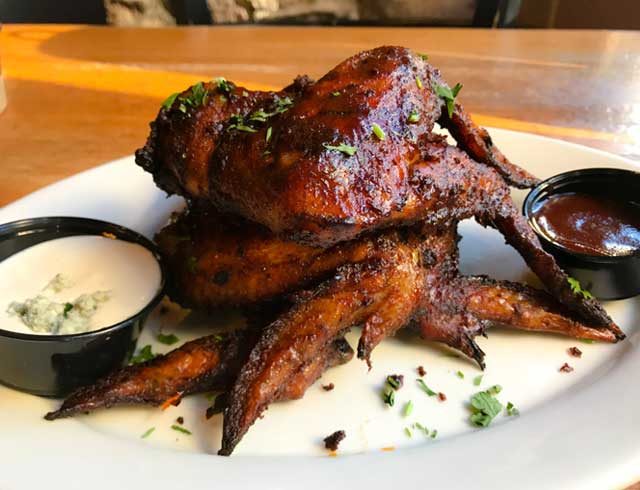KANSAS CITY, MO. – As consumers stayed home and barbecue smoke filled backyards during COVID-19, interest in the category appeared to increase. Now, food formulators could consider barbecue tastes from Kansas City to South Korea to satisfy consumer curiosity. Such flavors may be a match for items like plant-based meat alternatives, marinades, snacks and even fruit.
Comax Flavors, Melville, NY, listed barbecue in its 2022 flavor trends and had data to support the decision. Sales of grillers and smokers increased 39% from April 2020 to February 2021, according to The NPD Group, Port Washington, NY. Global barbecue-flavored food and beverage launches grew 19% from 2015 to 2019, according to Innova Market Insights, Arnhem, The Netherlands.
Comax Flavors recently launched its “Get Grillin’” collection that includes classic barbecue, smoky bourbon barbecue and Korean barbecue. The flavors may be used in a variety of applications, including animal-based protein and plant-based alternatives, seasonings, coatings, sauces, marinades and snacks.
“Now that people are grilling more, we’ve seen an increased interest in barbecue flavors that are regionally diverse ranging from sweet to smoky,” said Catherine Armstrong, vice president of corporate communications for Comax Flavors.
Barbecue flavors work well in snacks, meats, plant-based meat alternatives, vegetables, sauces, dips, marinades and seasonings, according to Kerry, which has a US office in Beloit, Wis. Kerry identified 26 barbecue, smoke and grill tastes across Europe, Asia Pacific-Middle East-Africa, North America and Latin America. Thirty-nine global variations were identified. Korean barbecue flavors especially are becoming more popular, according to the company.
“Korean barbecue is still considered a very generalized overall flavor to most people,” said Soumya Nair, global director, consumer research and insights for Kerry Taste & Nutrition. “For consumers, it’s as if American barbecue represents the Western profile and Korean barbecue represents the East.
“Now familiar ingredients in Korean barbecue flavors like soy, honey, garlic, sesame and gochujang make the concept work in nearly any application, from a snack chip seasoning to a meat marinade, but to really deliver on the authenticity of Korean barbecue, developers must prioritize capturing the flavors created during charcoal cooking. The dimension in taste from grilling will help to replicate this globally popular cultural concept.”
Consumers may associate Brazilian barbecue with the romance of smoke and cooking over or next to a fire, she said.
“But almost equally important is the simplicity of seasoning, oftentimes using only coarse salt, to allow the fire to impart its magic and for the meats to maintain their natural rich and savory taste,” Ms. Nair said, adding the seasonings of salt, pepper, garlic, annatto, cinnamon and cayenne combined with fiery flavors from smoking and grilling are perfect for a rub or marinade onto various meats.
“One might also consider using Brazilian barbecue as a seasoning on roasted mixed vegetables, tossed over potatoes or included in an alternative protein meat concept where the smoky and meaty flavors bring you as close to the elemental barbecue experience as you can get,” she said.
Differences in KC, Carolinas and Texas
The United States is home to region-specific barbecue flavors.
“Familiarity is key when indulging for pleasure,” said Jennifer Zhou, senior director of product marketing, North America for Chicago-based ADM. “As such, regional barbecue styles across the US draw consumers back to their hometown roots. Kansas City features smoky sweetness with mustard, molasses, brown sugar and Worcestershire notes in a tomato base. The Carolinas cue eastern-style profiles such as vinegar and red pepper with a distinctive mustard-based sauce. Texas-style barbecue expresses best with salt and pepper rubs, smoked with oak.”
Taste is driven by the region, said Jill Houk, culinary director for spices for Olam Food Ingredients, a business of Singapore-based Olam International.
“For example, with Texas barbecue you’ll taste the flavor of the mesquite, the wood used in Texas, known for its unique flavor, which is strong and intense and is an especially popular smoking wood in southwest Texas,” she said.
Standing up to smoky flavors
In 2022, spices that complement and stand up to smoky flavors will be on the rise, Ms. Houk said.
“This will present an interesting challenge to food manufacturers as they look to differentiate their own signature smoky identity,” she said. “This is where unique blends that include cumin, higher heat chili peppers and citrus will come into their own.”
Nuts, chips, jerky and other common savory snack foods may be heightened in flavor with smoky barbecue spices such as smoked paprika, cumin, cayenne, ginger and cinnamon, she said.
“The strong smoky flavors in these spices also allow formulators to reduce the sodium content in products,” she said. “Hints of barbecue flavors even find their way into desserts. Grilled pineapple or peaches can be an intriguing addition to cakes, pies and ice creams, as well as the use of smoked vanilla to add complexity to dessert sauces.”


